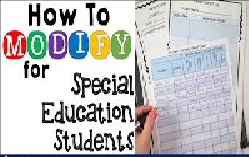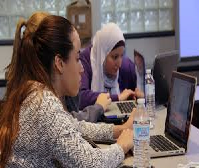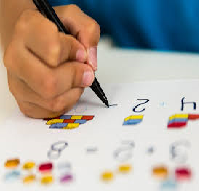Teacher Behavior Expectations and Consequences Consider a familiar school setting. This might be a school where you work or a school that your children attend.

What are the implicit and explicit expectations of teacher behavior in that school setting? What are the consequences of violating those expectations?
Complete Parts 1–3 below.
Part 1: State Statutes and District Policies
Locate and examine the Department of Education statutes for teacher behavior for your state.
Locate and examine the district policies for teacher behavior for the school setting you selected.
Complete the tables below. List three state statues and three district policies regarding teacher behavior. For each, identify the teacher behavior that violates the statute or policy, and describe the consequence.
State Statute Teacher Behavior Consequence
District Policy Teacher Behavior Consequence
Part 2: Implicit Expectations and Consequences
Complete the table below. For each of the domains listed, identify a possible implicit expectation for teacher behavior and the possible consequences of violating that expectation.
Domain Implicit Expectation Consequence
School property
Teacher–student relationships
Teacher–colleague relationships
Teacher–parent relationships
Teacher personal lifestyle
Teacher freedom of expression
Teacher supervisory liability
Teacher Behavior Expectations and Consequences and References
Part 3: References
Include a list of APA-formatted references used to complete this assignment.
Teacher Behavior: Expectations and Consequences
Consider a familiar school setting. This might be a school where you work or a school that your children attend. What are the implicit and explicit expectations of teacher behavior in that school setting? What are the consequences of violating those expectations?
Complete Parts 1–3 below.
Part 1: State Statutes and District Policies
Locate and examine the Department of Education statutes for teacher behavior for your state.
Locate and examine the district policies for teacher behavior for the school setting you selected.
Complete the tables below. List three state statues and three district policies regarding teacher behavior. For each, identify the teacher behavior that violates the statute or policy, and describe the consequence.
State Statute Teacher Behavior Consequence
District Policy Teacher Behavior Consequence
Part 2: Implicit Expectations and Consequences
Complete the table below. For each of the domains listed, identify a possible implicit expectation for teacher behavior and the possible consequences of violating that expectation.
Domain Implicit Expectation Consequence
School property
Teacher–student relationships
Teacher–colleague relationships
Teacher–parent relationships
Teacher personal lifestyle
Teacher freedom of expression
Teacher supervisory liability
Part 3: References
Include a list of APA-formatted references used to complete this assignment.












